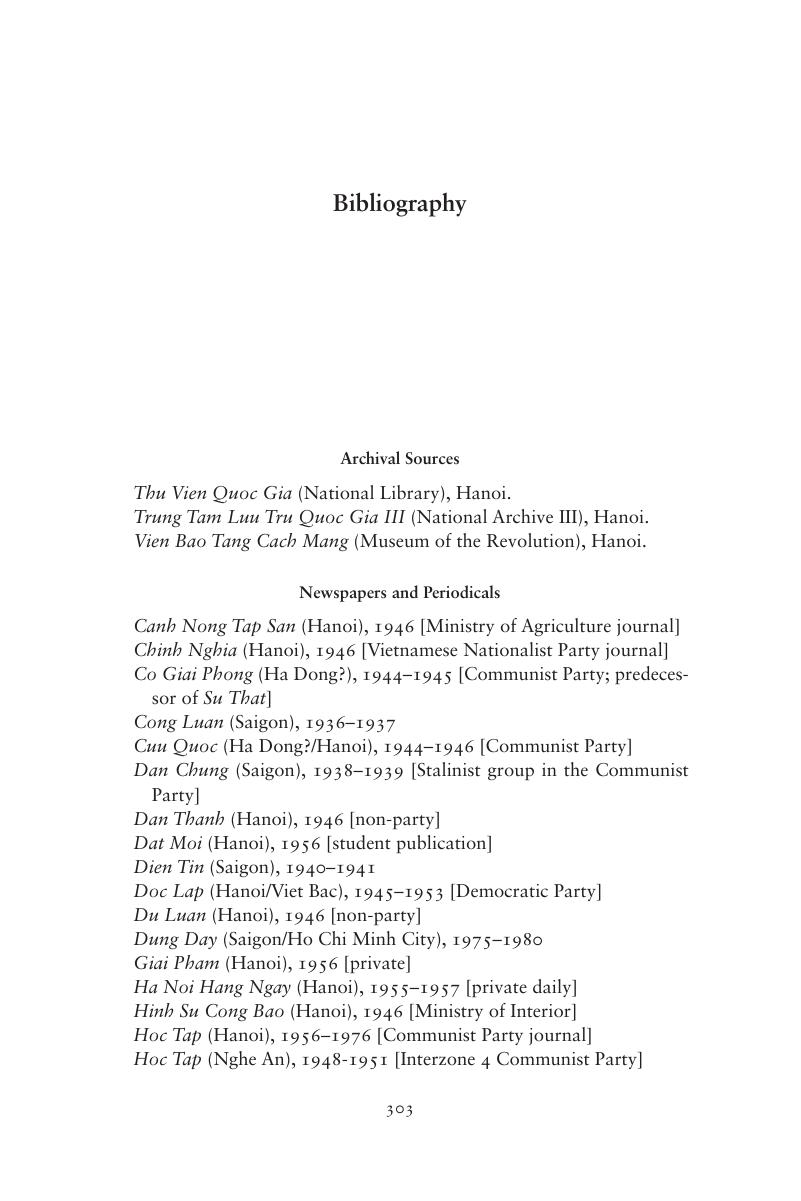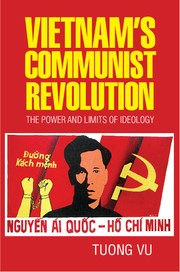Book contents
- Vietnam’s Communist Revolution
- Cambridge Studies in US Foreign Relations
- Vietnam’s Communist Revolution
- Copyright page
- Contents
- Acknowledgments
- Abbreviations
- Maps
- Introduction
- 1 Revolutionary Paths through the Mind, 1917–1930
- 2 The Consolidation of a Leninist Vision, 1931–1940
- 3 The Making of a Cold War Outpost in Indochina, 1940–1951
- 4 Patriotism in the Service of Socialism, 1953–1960
- 5 From Idealistic to Realistic Internationalism, 1957–1963
- 6 The Rise of Vanguard Internationalism, 1964–1975
- 7 From Revolutionary Vanguard to Soviet Client, 1976–1979
- 8 The Crisis and Death of Utopia, 1980–1991
- 9 Legacies of Ideology, 1991–2010
- Epilogue
- Appendix A Ho Chi Minh’s Letter to Stalin, October 14, 1950
- Appendix B Anti-American Articles Penned by Ho Chi Minh, 1951–1955
- Bibliography
- Index
- References
Bibliography
Published online by Cambridge University Press: 09 February 2017
- Vietnam’s Communist Revolution
- Cambridge Studies in US Foreign Relations
- Vietnam’s Communist Revolution
- Copyright page
- Contents
- Acknowledgments
- Abbreviations
- Maps
- Introduction
- 1 Revolutionary Paths through the Mind, 1917–1930
- 2 The Consolidation of a Leninist Vision, 1931–1940
- 3 The Making of a Cold War Outpost in Indochina, 1940–1951
- 4 Patriotism in the Service of Socialism, 1953–1960
- 5 From Idealistic to Realistic Internationalism, 1957–1963
- 6 The Rise of Vanguard Internationalism, 1964–1975
- 7 From Revolutionary Vanguard to Soviet Client, 1976–1979
- 8 The Crisis and Death of Utopia, 1980–1991
- 9 Legacies of Ideology, 1991–2010
- Epilogue
- Appendix A Ho Chi Minh’s Letter to Stalin, October 14, 1950
- Appendix B Anti-American Articles Penned by Ho Chi Minh, 1951–1955
- Bibliography
- Index
- References
Summary

- Type
- Chapter
- Information
- Vietnam's Communist RevolutionThe Power and Limits of Ideology, pp. 303 - 322Publisher: Cambridge University PressPrint publication year: 2016



